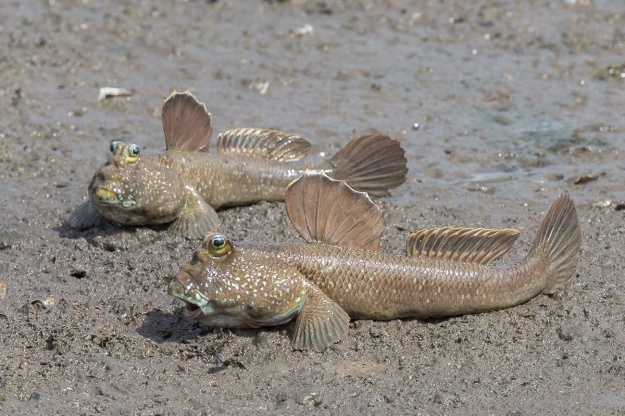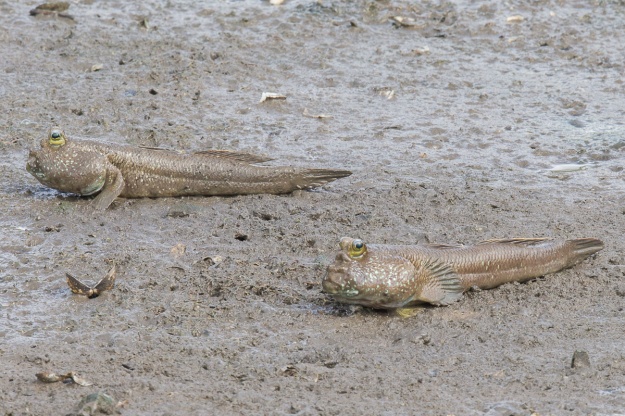The Great-billed Heron (Ardea sumatrana) is a large heron (up to 1.15 metres in height) that inhabit coastal areas in South-east Asia, Papua New Guinea to Australia.
In Singapore, it is considered a rare resident bird species, with sightings mainly on the various small offshore islands, although occasionally they turn up in Sungei Buloh. One of the most reliable place to see this species is at Chek Jawa Wetland in Pulau Ubin during low tide. There seem to be 2-3 of these around regularly, out about hunting on the shallow waters of the seagrass lagoon. There they wait patiently for fishes that pass by. As the name suggest, they have large, long and sharp bills, which they use effectively to spear their victims.
On the morning of 29 January 2012, I went out to Check Jawa to observe the birds that linger around during low tide. One of my target bird species was the Great-billed Heron and as expected, a pair turned up waiting patiently for their prey, although at quite a distance away. I took a few pictures and decided to search for the Grey Plovers that were also present. Unfortunately the Grey Plovers did show up but soon flew away.
Turning my attention back at the pair of herons, I noticed one of them had managed to catch a big fish. It turns out that it had speared a big Barramundi (Lates calcarifer) using its bill and it was hanging loosely, still alive and wiggling. The Barramundi also known as Asian seabass, is a big fish (average length of 0.6-1.2 metres). It is highly prized by anglers and is an important commercial food fish. In Singapore, the Hokkiens call this fish ‘kim bak lor‘ (金目鲈), and the Malays refer to it as ikan siakap.
Once caught, the heron repeatedly placed the fish down to the water as if to wash it of any contaminant, and held it up in the air. Land-based birds normally take their prey and whack them against a hard surface to knock them out, before swallowing. The heron in contrast, cannot employ the same tactic, as the surface tension of the water is too weak to knock out the fish. Instead, I speculate that by placing it on the shallow water, it gives the heron the opportunity to re-spear the fish, causing more injury, and holding it up in the air again to deprive the fish of water it needs to breathe on. Whatever it was, the tactic seems successful, and the heron managed to kill the fish and then proceeded to swallow it.


